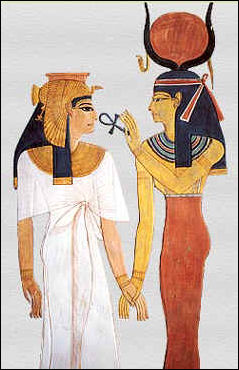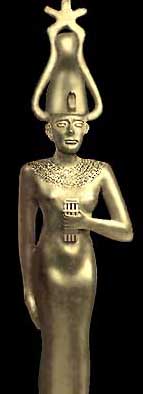This video is all I could find on astronomy and Easter online.The ancient libraries over which Seshat was the priestess of, or symbol over (I conceptualize her depictions as a mascot for education), taught students about astronomy, archaeology, agriculture, and medicine. The dates that were noted astronomically were "recognized", "marked", "noted", "celebrated", "written", "revered", and associated with the holder of this knowledge. I purposely am not using the often used terms of worshiped and the like. Before they became noted and passed down through scripture in the church, they were taught in the schools and learned in the libraries. Libraries that no longer exist. We have remnants we see in our "behaviors"cross culturally during this time period, and in the "script"ures that humans DID protect that we still have with us. They are summaries, not the entire story. Some summaries of the "Mistress of the House of Books (Seshat)"we can see in this particular holiday I will note, but not go too deep into at this point. I will also provide some information from other sources on a current spring equinox holiday based on the lunisolar calendar still practiced today by the people who occupy the land of the people of ancient Kemet, Sham El-Nasim.

"She (Seshat) also often offers palm branches (the hieroglyph for "many years") as a gift to a ruler." Often shown wearing a leopard skin further indication that she is an ancient goddess.
 |
Seshat inscribing on the palm-leaf rib
By Rameses II at Abydos |
Notches a palm frond to mark the lifespan of the king. Records the royal names at birth and coronation. Grands sed-festivals to the king. Symbol is seen in sed-festival images. Since "She" grants sed-festivals and assigns lifespan, can be compared to concept of fate.
Monday 25 April marks Sham El-Nasim, which Copts celebrate as part of Easter, but is one of the few days that Egyptians of all religions celebrate - since ancient times
Monday 25 April marks Sham El-Nasim (Shemu- renewal of life), in the same breath as Easter. The rituals and beliefs associated with today’s Sham El-Nasim celebrations link it directly to ancient Egyptian feasts.
Celebrated since 2700 BC by all Egyptians regardless of their religion, beliefs, and social status, the name Sham El-Nasim (Inhaling the breeze) is derived from the Coptic language that, in turn, is derived from the ancient Egyptian language. Originally pronounced Tshom Ni Sime, with tshom meaning “gardens” and ni sime meaning “meadows.”
Like most ancient Egyptian feasts, Sham El-Nasim was also affiliated with astronomy and nature. It marks the beginning of the spring festival, which is the time they believed day and night are equal, (when the sun is in the Aries zodiac) hence marking the beginning of creation. They confirm the exact date annually by sighting the sun in relation to the great pyramid. Ancient Egyptians named it The Feast of Shmo (the revival of life) and we have documentation that it was officially being celebrated in 2700BC. This holiday is one to connect with nature, they also paint eggs and actions that are also a part of "Easter Celebrations". According to wikiki, "Easter is linked to the
Passover and
Exodus from Egypt recorded in the
Old Testament through the
Last Supper and
crucifixion that preceded the resurrection". The date for Easter is determined on a
lunisolar calendar.
On this national holiday the traditional Sham El-Nasim meal consists of fish, onions and eggs.
Fish was highly respected in ancient Egyptian beliefs. Salted mullet fish (known as
fesikh), was offered to the gods in Esna in Upper Egypt to the extent that Esna’s ancient name was Lathpolis, which was the name of the original fish before it is salted.
As for colouring eggs, it’s a custom mentioned in the pharaoh’s famous Book of the Dead and in Akhenaton’s chants, “God is one, he created life from the inanimate and he created chicks from eggs.” Hence, the egg was a symbol of life to ancient Egyptians. Ancient Egyptians would boil eggs on Sham El-Nasim eve, decorate and colour them in various patterns, then write their wishes on these eggs, tuck them in baskets made of palm fronds and hang them on trees or the roof of their houses in hopes that the gods would answer their wishes by dawn. The habit of eating onions on that day is equally ancient.
In ancient Egypt, families would combine all of these: they would gather on the eve of Sham El-Nasim to color the boiled eggs, prepare the fish and onion, some hanging the onions on their door steps to ward off evil spirits and putting them under their grandchildren’s pillows that night to summon the god Sukar. Before dawn, people would head to meadows, gardens and the Nile river bank to watch the sunrise while carrying food and flowers. They spend their day out in the open air, joyfully singing away the hours.
http://english.ahram.org.eg/NewsContent/32/97/10483/Folk/Street-Smart/A-very-ancient-Egyptian-Easter-Sham-ElNasim.aspx
The biblical accounts of Palm Sunday can be found in Matthew 21:1-11; Mark 11:1-11; Luke 19:28-44; and John 12:12-19.
See also Sukkot - The holiday lasts seven days



The sacred tree in
Assyrian mythology is a palm that symbolizes
Ishtar connecting heaven, the crown of the tree, and earth, the base of the trunk. Palm stems represented long life (time) to the
Ancient Egyptians, and the god
Huh was often shown holding a palm stem in one or both hands. The
Kingdom of Nri (
Igbo) used the "omu", a tender palm frond, to sacralize and restrain. The palm tree was a sacred sign of
Apollo in
Ancient Greece because he had been bor
 |
Ḥauḥet (female) & Ḥeḥ (male) represented a
member of the Ogdoad of eight primeval
deities whose worship was centered at
Hermopolis Magna since Old Kingdom onward.
Infinity, millinium, eternity |
n under one in
Delos.
[4] In ancient Mesopotamia, the date palm may have represented fertility in humans. The Mesopotamian goddess
Inanna, who had a part in the sacred marriage ritual, considered herself the one who made the dates abundant.
Tradition held that at least seven years would pass upon the death of the eze Nri before a successor could be determined;
A variant of this "holy"day (so ancient, its divine) is also celebrated among the Igbo.
See my other posts on other similarities among Nigerian and West African cultures and the writings of the ancient Egyptians. The eze Nri was chosen after an interregnum period while the electors waited for supernatural powers to manifest in the new ezeNri. He was installed after a symbolic journey to Aguleri on the
Anambra River.
[3] There, he would supposedly use magical powers to collect stones from under the water, undergo a symbolic burial and exhumation, then finally be anointed with white clay, a symbol of purity. Upon his death, he was buried seated in a wood-lined chamber.
[3] The eze Nri was in all aspects a divine ruler. The eze Nri's first son and daughter were required to undergo scarification's seven days after birth, with the eze Nri's daughter being the only female to receive ichi.
 |
| Master of the Palastkapelle in Palermo |
I think we see the pattern here folks, with the number 7 being used to reference the source to complete the full telling these stories. Not to be taken literally.
 |
| Igbo ichi marks |
 |
| OBSSA IRIJI CEREMONY |
For those without preservation in material form, I provide an example of ritual in the living preserving this knowledge. Here is a man from West Africa with a pattern meant to imitate the rays of the sun. In the Agbaja style, circles and semicircular patterns are added to the initial incisions to represent the moon. These scarification's were given to the representatives of the eze Nri; the mbùríchi.

















.jpg)











